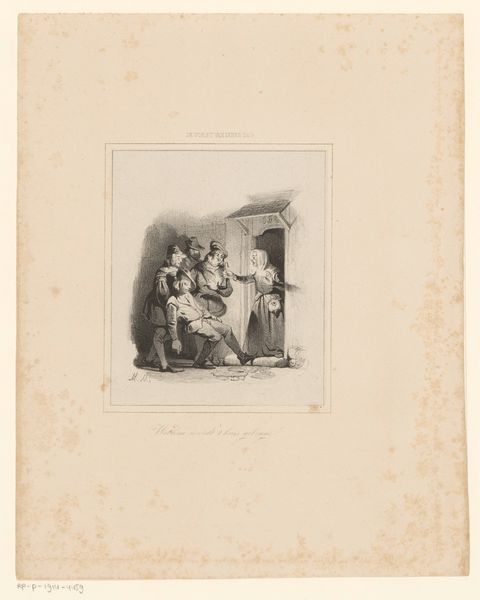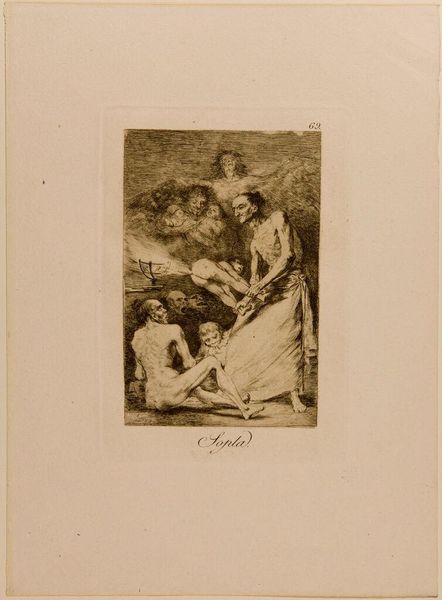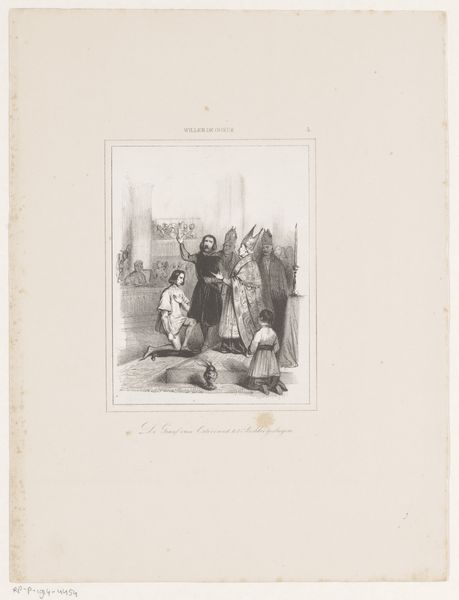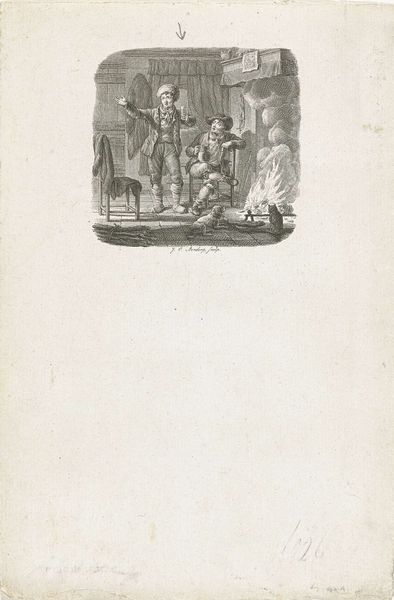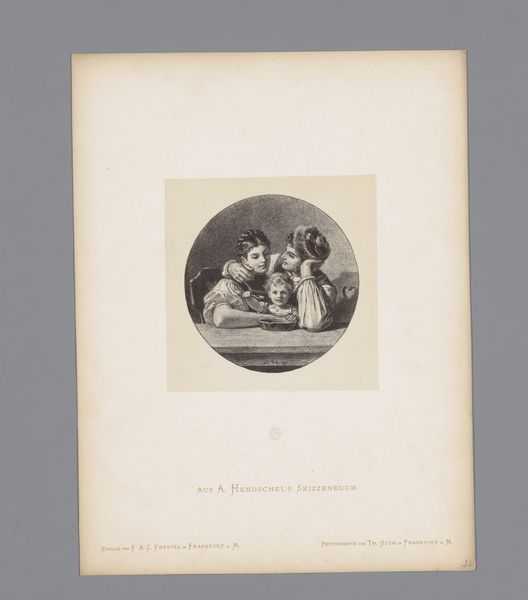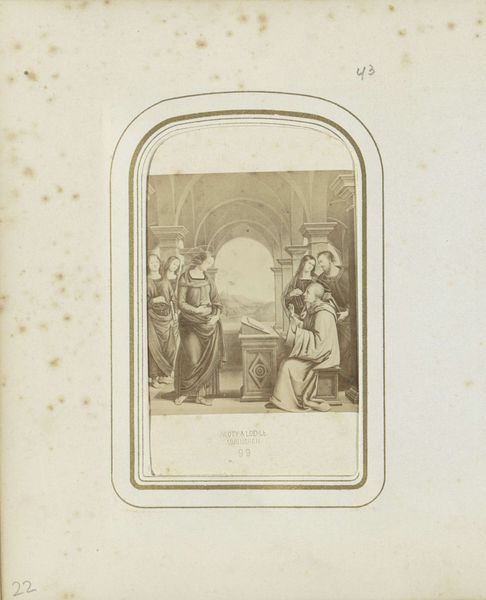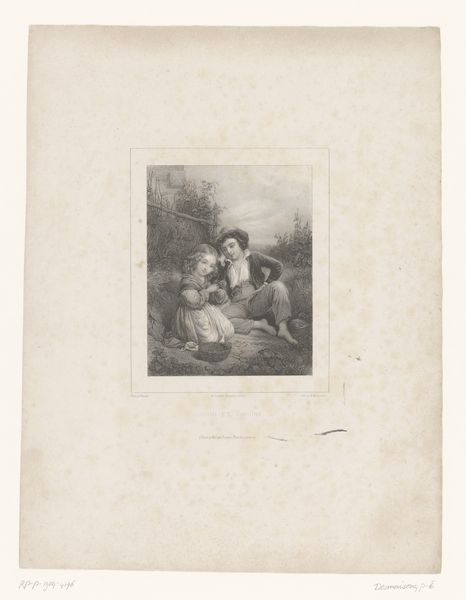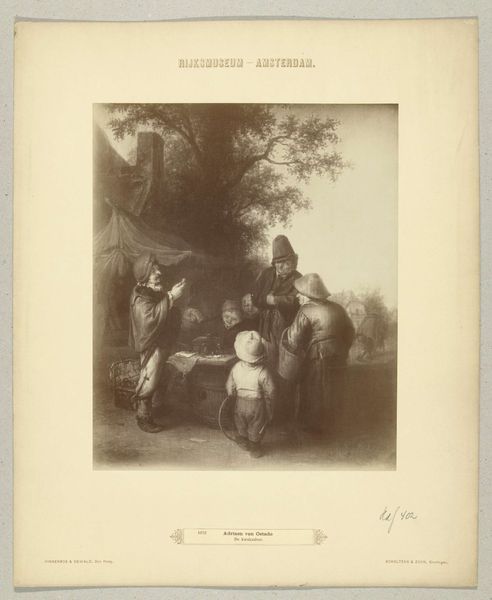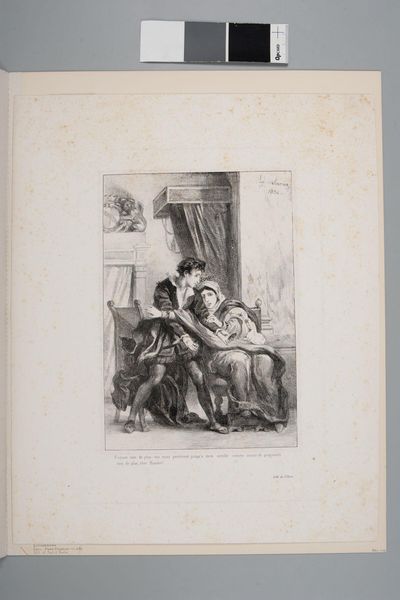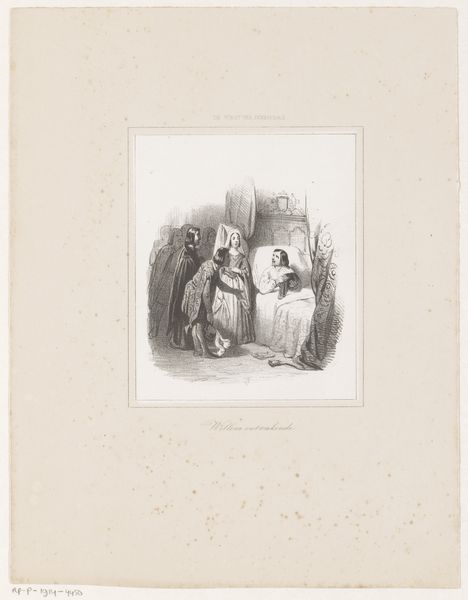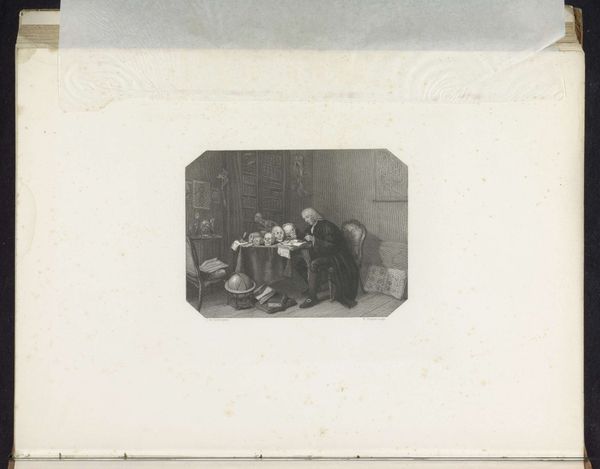
drawing, lithograph, print, paper
#
drawing
#
lithograph
# print
#
caricature
#
figuration
#
paper
#
romanticism
#
france
#
genre-painting
Dimensions: 172 × 137.5 mm (image); 306 × 228 mm (sheet)
Copyright: Public Domain
Editor: This is Paul Gavarni's "The Comics' Theatre-Box" from 1834, a lithograph on paper. It has a casual, intimate feel. What strikes me is how immediate it feels. What are your initial thoughts on the piece? Curator: Considering Gavarni's lithograph through a materialist lens allows us to ask: What kind of paper was he using? How readily available was it, and what does that availability tell us about the rising middle class in France, the consumers of this image? What specific lithographic stones and inks were being produced at that time, and what workshops made them available to artists such as Gavarni? Editor: That’s a really interesting way to approach it – thinking about the physical creation rather than just what's depicted. So, the rise of a certain paper quality might tell us about societal shifts? Curator: Exactly. We can investigate the political and economic landscape tied to lithography. Who owned these workshops? Who were the laborers? Were there emerging forms of artistic collectivism? Was the paper sourced locally or from colonial holdings? Such questions redirect our understanding of romanticism itself. Editor: So, instead of focusing on emotion, as you would traditionally, you’re looking at production and consumption? Curator: Precisely. And how those processes shaped the aesthetic result, and thus social perception. It challenges the conventional hierarchy which places the “artist genius” above the very means of production that give their art meaning. Consider how the *mass production* of this image democratizes representation in ways traditionally unavailable prior to the print age. Editor: That's made me rethink what I see. I was looking at it as a scene, but it’s also an object tied to broader systems of labor. I hadn't thought about it like that. Thanks! Curator: Thinking about art's materiality grounds it in concrete realities, expanding the artwork's significance beyond purely aesthetic concerns.
Comments
No comments
Be the first to comment and join the conversation on the ultimate creative platform.

